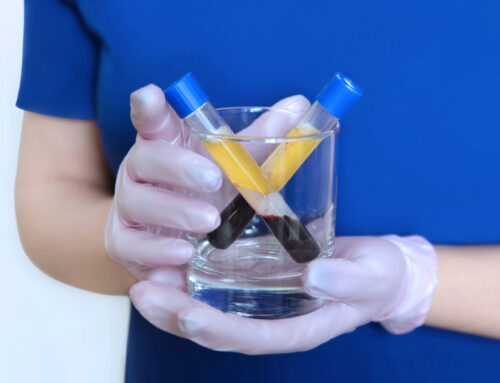Listen to the whole interview here, or read the transcript below:
Peter MacArthur: 9:36 here on AM 1150 and 101.7 FM WDEL.com. How are you feeling this morning? Do you wake up day after day and deal with back and neck pain and think you’ve exhausted your options? You’ve had surgery, you haven’t had surgery, you don’t want surgery, and you think that’s about it. That’s conventional thinking with a lot of people and the truth is that’s not the full extent of a way you could get back quality of life with conditions like this chronic pain and such. First State Spine is located here in Delaware and Dr. James Downing is joining us this morning from First State Spine. Good morning. How are you?
Dr. James Downing: Good morning, Peter. Thank you for having me in.
Peter MacArthur: Yeah, absolutely. Why don’t we talk first about the problem and the root of the problem? Neck and back pain can really lay a person out, you know, as opposed to some of the pains that we get in other parts of the body. They really are central to our well-being, and they can take people’s quality of life and just crush that, doctor.
Dr. James Downing: Oh, absolutely. Unfortunately, low back pain is a very common problem in our population. When I meet patients in the office, one of the things I show them is a skeleton and compare the anatomy of the human spine to the anatomy of animals such as a tiger or a bear that still run on all fours. Our spine is shaped about the same as back when we traveled on all fours. Now that we stand on our hind legs, it puts a lot of stress on the low back. And almost everyone over 40 or 50 years old has low back problems. 80% of the population will see a doctor about their low back at some point in their life. It’s a huge problem. And for pain that persists, and by chronic, I mean more than six months, that’s probably 30 million Americans, a large group of people.
Peter: You’re talking about people then, that really deal with this on a daily basis on some level and that part of it is not so normal in the equation.
Dr. Downing: Right. It’s common, but it’s not normal. It’s not good. Pain causes disability. It affects your ability to perform at work or your ability to recreate and interact with your family. It affects your ability to exercise, and so it affects your whole life.
Peter: Yeah. And so the neck is obviously a part of this as well. It’s right in line there and becomes an issue unto itself sometimes.
Dr. Downing: Absolutely.
Peter: First State Spine does many things there in terms of pain management and interventional procedures. Talk to us about, first of all, who are we talking to this morning that might benefit from what it is that you guys offer there, doctor.
Dr. Downing: Right. So this large group of people, 30 million Americans, typically it’s people 40 and older that are starting to develop back pain. The majority of those people, probably two-thirds, will improve with conservative care, and by that I mean physical therapy or chiropractic care along with anti-inflammatory medications such as Naprosyn or Ibuprofen. About two-thirds of people will get better with what we call conservative care. That still leaves a large group of people that don’t improve with those conservative measures, which are frequently orchestrated by your family physician. They would then be referred to us to discuss the next options. Of that group that doesn’t respond to conservative measures. About two-thirds will improve with the kind of invasive treatments we do, such as epidural steroid injections and facet joint injections. So about two-thirds of the people that don’t respond to conservative measures will respond to a couple of injections. That still leaves a large group of people, probably five or 10 million, who are not responding. And that’s the tough group in our population. We have two options. They’re not new, but they are really coming into the forefront and are available now for these folks who have had six months of conservative care and still have problems.
Now, traditionally, those were difficult people to deal with because we didn’t have a good option. Surgery, which would involve fusion of the spine – globally speaking – about 50% of people improve with fusion surgery. Now, that’s not the people that have sciatica pain shooting down the leg. About 95% of those improve with surgery, but for people whose main problem is literally just back pain and not leg pain, surgery is not a great option. It might be 45 or 55% effective, but it’s not 100% effective. So the two new options or newer options we have are regenerative therapy, which is the injection of what is generically referred to as stem cells. It’s your body’s own cells injected into the discs and joints to try to either reduce inflammation or regenerate the disc. That’s one option, and I spoke to you about that a few months ago.
Another option that is FDA-approved, Medicare approved, and covered by most major insurance companies is a newer procedure called basivertebral ablation. I’ve been practicing for 30 years and this new treatment, and I’m calling it new because it’s sort of new to this area. I have performed it a few times. I’m not sure that anyone else has done it in Delaware, but there are large studies to support it. It’s a novel treatment that really is very encouraging. And that’s one of the things I want to talk about while we’re here today.
Peter: Yeah, let’s do that. I mean, first of all, what does it entail?
Dr. Downing: Yeah, well, a little bit of background. There are two main things that cause low back pain: arthritis in the joints which is something we can treat already with facet joint treatments and pain coming from the disc and vertebral bodies. That’s sort of the main weight bearing part of your back. Up until now, the only definitive treatment for that was fusion surgery which we’ve already discussed is not universally effective. This newer procedure is called basivertebral nerve ablation The trade name is Intracept. The basivertebral nerve is the nerve that is ablated and this is a technology that’s been shown to be effective in large, five-year, randomized, controlled studies both in the United States and Europe and produce very encouraging outcomes. Briefly, what it means is there’s a nerve that gives you the sensation in the vertebral end plate and disc. That’s called the basivertebral nerve. It’s a little branch off the spinal cord that goes through the bone and then feeds the disc and mediates the pain. So this nerve is how your brain gets the message that your back hurts. There’s a procedure that’s been developed where we bore a small hole through the bone of your back. I’ve done thousands of these kinds of injections. This is a modification of what we already do, okay? The patient lies on their tummy under sedation. We numb up the skin, put a needle down to the spine, bore a small hole through the bone, and then put a small probe through that hole. The tip of that probe heats up. We do this under X-ray guidance called fluoroscopic guidance, so we can see right where this little probe is. We put the probe where we know the nerve is. We turn on a radiofrequency generator that creates a small zone of heat. That heat melts or burns the nerve so that the nerve will no longer conduct the painful sensation to the brain. Ablation means heating or melting a nerve. The basivertebral nerve is the nerve we’re heating or melting. Then we take the probe out, take the needle out, put a bandaid on, and the patient goes home. I’ve done a handful of these already, and the results are very encouraging. As a physician, what we should really care about is, whether there is data to support doing something like that, correct?
Interestingly, for the basivertebral nerve ablation, there is very good data both in the US and Europe. A large randomized control study was called The Smart Study. The Smart Study followed patients both with the procedure and also it was randomized. So some people thought they were getting the procedure but got a sham procedure. In other words, they came in like a placebo effect. Exactly. It helps eliminate the placebo effect. Of this group of people, 75 were followed for five years. This is an extensive, high-quality study. At five years out, 66% of the patients had decreased disability and decreased pain. 33% were pain-free at five years. Well, this is not something that we see in other forms of treatment of back pain.
Peter: By the way, if you are just joining us, Dr. James Downing is joining us from First State Spine, and we’re talking about really just some of the technologies that are available to you, you might not know about or have thought about, if you suffer from chronic neck and back pain, could get you back in the game. I think maybe it’s just a mental thing, doctor, when you wake up with this pain every day, some people kind of wave the white flag on it after a while. They accept that this is going to be their day-to-day. They go to the medicine cabinet or what have you, not thinking about some of these options that we’re discussing here today. And I was curious about the staying power of that practice you mentioned five years out. That’s an amazing stat in and of itself.
Dr. Downing: It really is a very meaningful result. And to get a new procedure FDA-approved and approved by Medicare, just literally, takes a lot of work and a lot of money from the companies that do these large studies. And the FDA is a very discerning organization. To get something actually approved, you can’t just say it works. You have to prove it works.
The fact that this company, Relievant, put the time and money into these studies and got this FDA approved is because they have good data. And as I said early on, our results have been very encouraging. Now, this is not, you know, a magic bullet. It’s not going to be applicable to everybody with low back pain. I want to emphasize that. It’s for people who’ve had at least six months of traditional therapy. And then there’s a certain finding we look for, almost everyone that’s had six months of back pain would’ve had an MRI, which is the high quality imaging study we get and there’s certain things we look for on the MRI that suggest that a patient will improve with Intracept.
And what we look for are these signs of inflammation along the disc and the end plate where the disc meets the bone and we see those signs commonly. That’s the group of people. So it’s a subset of people with low back pain, but it’s a significant chunk of them. And as I mentioned, I’m encouraged because these were the people who, up until now, we really didn’t have a great option for, it was one of those, you know, we see these men and women back once or twice a year for therapeutic injections, which help, but we weren’t really turning the corner. With properly selected patients, this is a very encouraging option.
Peter: The proper selection is obviously a key part in the fact that you have things you can look for. What about the downtime after the fact?
Dr. Downing: Nationwide in some centers, this procedure is done under general anesthesia. I perform this under what’s called monitored anesthesia care or deep sedation, sort of a twilight sleep.
Okay. So the patient goes home with a band-aid and goes home that day. Uh, you can return to office work within a couple days.
Peter: Wow.
Dr. Downing: After this procedure. It’s not anywhere near like the recovery from surgery at all. And you’re also not burning any bridges like you would once you have a lumbar intervertebral fusion. You’ve got screws and plates put in your back. It’s, it’s a permanent change, biomechanically in the way your back moves and works. You just can’t undo it. Fusion is necessary in a certain group of people. They just need to have it if they have instability. But for people with axial low back pain, I just mean by axial low back pain I mean pain literally in the back. Not sciatica down the legs, but just back. That hasn’t responded to traditional therapy. This is a meaningful option and it can be sorted out pretty easily. As I said, most of these folks have already had an MRI. If they haven’t, by this point, they should get one. We look for certain changes in the MRI that identify that they would be candidates for this procedure and then we could talk to them about it.
Peter: Yeah. Are these team efforts within First State Spine, is there a lot of consulting with others within your practice?
Dr. Downing: Absolutely. And that’s important. Remember, care needs to be integrated. It’s not all this procedure. Some people do need surgery, some people just need epidural steroids. Some people just need physical therapy and an anti-inflammatory. It’s never one size fits all. As this procedure becomes more well known, more people will come talk to us and other physicians will start offering it as well. But it’s very encouraging. As I said, I’ve been practicing for 30 years and this is one of the most significant changes I’ve seen in this field.
Peter: Yeah, it really is quite something. When you talk about, as we did at the top, the importance of the back and its function within our body and the things it allows us to do and the small pool of potential treatments we’ve had to work with up until now, it’s gotta make it a real challenge for doctors like yourself to pick out and offer promise to people down the road with their conditions.
Dr. Downing: It’s challenging. It’s also exciting. And it’s also, you know, fun for me to learn a new procedure. I went up to Philadelphia for training with this at the center. And, being able to offer something new that’s useful is gratifying.
Peter: Why don’t we talk about some contact information for people that are listening and saying I at least want to talk to these people to find out what it is they might be able to do for me. Where should they turn and really what are the other practices that you offer.
Dr. Downing: firststatepine.com is the way to contact us. This is our website that will connect you to me. I’m Dr. Downing with Interventional Spine and all of my partners. I’m in a group with Dr. Peter Witherell, and then we are in close association with both spine surgeons and physiatrists.
We have relationships with physical therapists. We can offer all options. I want to emphasize that this procedure is not by any means, the most common one I perform. The bulk of what I do is just what I’ve been doing for many years. This is gonna be a subset of what we do, but it’s gonna be interesting.
Peter: Yeah, it certainly is. So again, I’m at first state spine.com and there’s a plethora of information. If you’re listening one, sometimes it’s easier for people to get their eyes on some things that they’re hearing. So I always try to point people to a website if possible. But if you’re even questioning listening right now, whether or not they can be. Go on the website and just see what they have to offer because it’s plenty. And you heard Dr. Downing talking about some of the new technology and, and really just the promise it holds and it’s, it’s just a, a wonderful thing. So I appreciate it. I see that you are in your scrubs and I suspect that there’s a procedure you’re going to be delivering shortly.
Dr. Downing: Well, I’m on the way to the office. Yep. I didn’t have to stay up late and watch the Phillies last night, so I’m fresh as a bunny here.
Peter: Yeah, exactly. Well, we’ll give it another try tonight and you can watch and if you’re on the road in the meantime, you can certainly listen on WDEL, all your Phillies playoff games there. Great to see you again.
Dr. Downing: Nice to see you, Peter. Go Phillies.
Peter: It’s at 9:52 now here on Dell Aware.
"}” data-sheets-userformat=”{"2":513,"3":{"1":0},"12":0}”>





